| Active |
|---|
| This application does not need additional settings. So you can make connectionUnique, active service acces point to a network. There are different types of connections (API key, Oauth…). only by using your login credentials or by following the instructions below . |
The Google Cloud Text-to-Speech modulesThe module is an application or tool within the Boost.space system. The entire system is built on this concept of modularity. (module - Contacts) convert text or Speech Synthesis Markup Language (SSML) input into audio data of natural human speech.
In order to use Google Cloud Text-to-Speech with Boost.spaceCentralization and synchronization platform, where you can organize and manage your data. IntegratorPart of the Boost.space system, where you can create your connections and automate your processes., it is necessary to have a Google account. If you do not have one, you can create a Google account at accounts.google.com. You must also have a project created in the Google Cloud Console and billing enabled for the Google project.
![[Note]](https://docs.boost.space/wp-content/themes/bsdocs/docs-parser/HTML/css/image/note.png) |
Note |
|---|---|
|
Boost.space Integrator‘s use and transfer of information received from Google APIs to any other app will adhere to Google API Services User Data Policy. |
To connect your Google Cloud Text-to-Speech account to Boost.space Integrator, you will need to obtain the project’s Client ID and Client Secret in the Google Cloud Console.
1. Sign in to Google Cloud console using your Google credentials.
2. Click Select a project > new project. Enter the desired project name, and click the create button. You can also select an existing project (and skip creating a new project).
3. Select the project you have created (or an existing project you want to use).
4. Go to APIs & Services > Library.
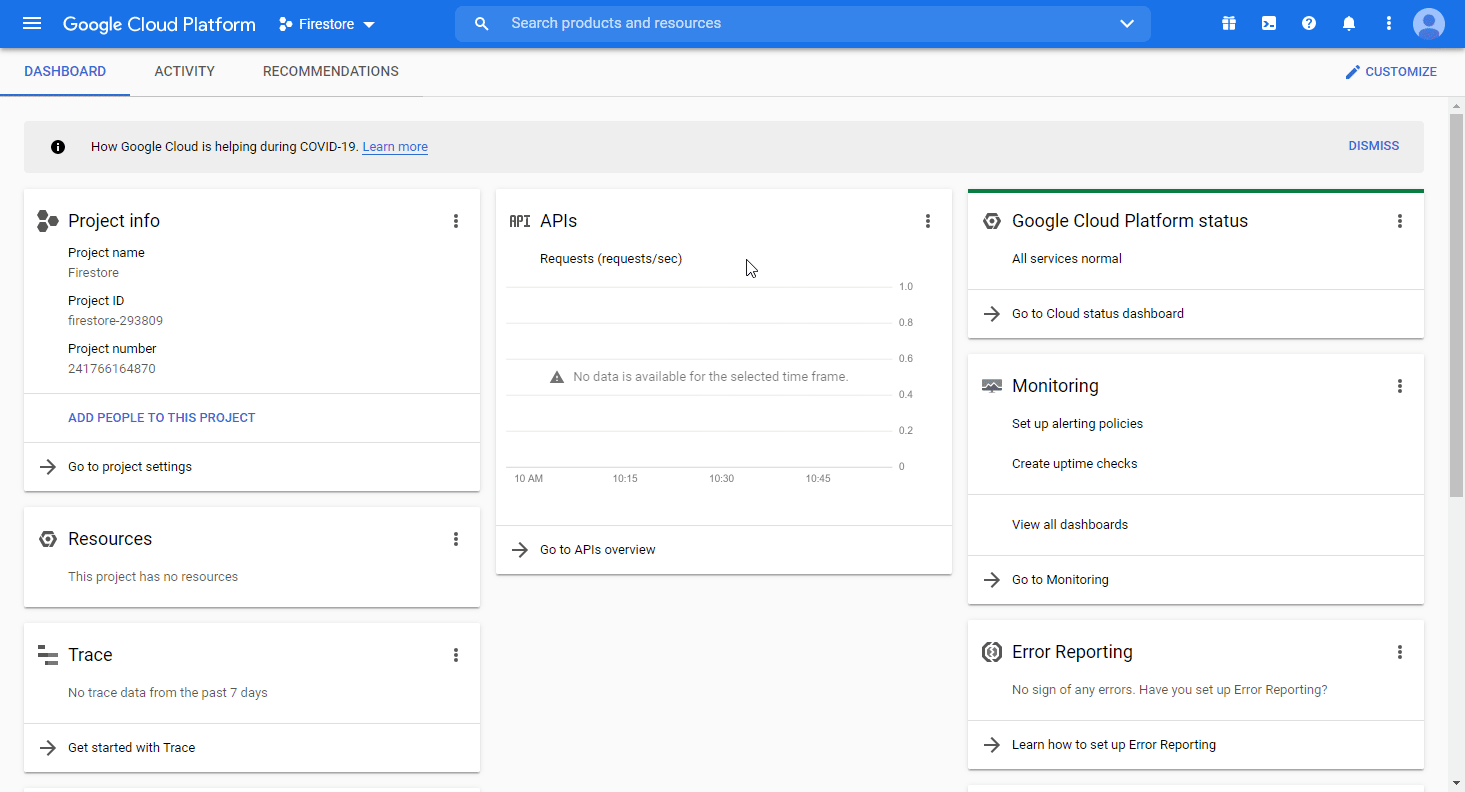
5. Search and enable the following APIs:
-
Cloud Text-to-Speech API
The desired service option should display as you type. Click on the API/service you want to connect to Boost.space Integrator.
6. Click the enable button to enable the selected API. The billing account must be enabled for the project. See the Modify a project’s billing settings documentation.
7. Navigate toAPIs & Services > OAuth consent screen settings, choose the External option, and click the create button.
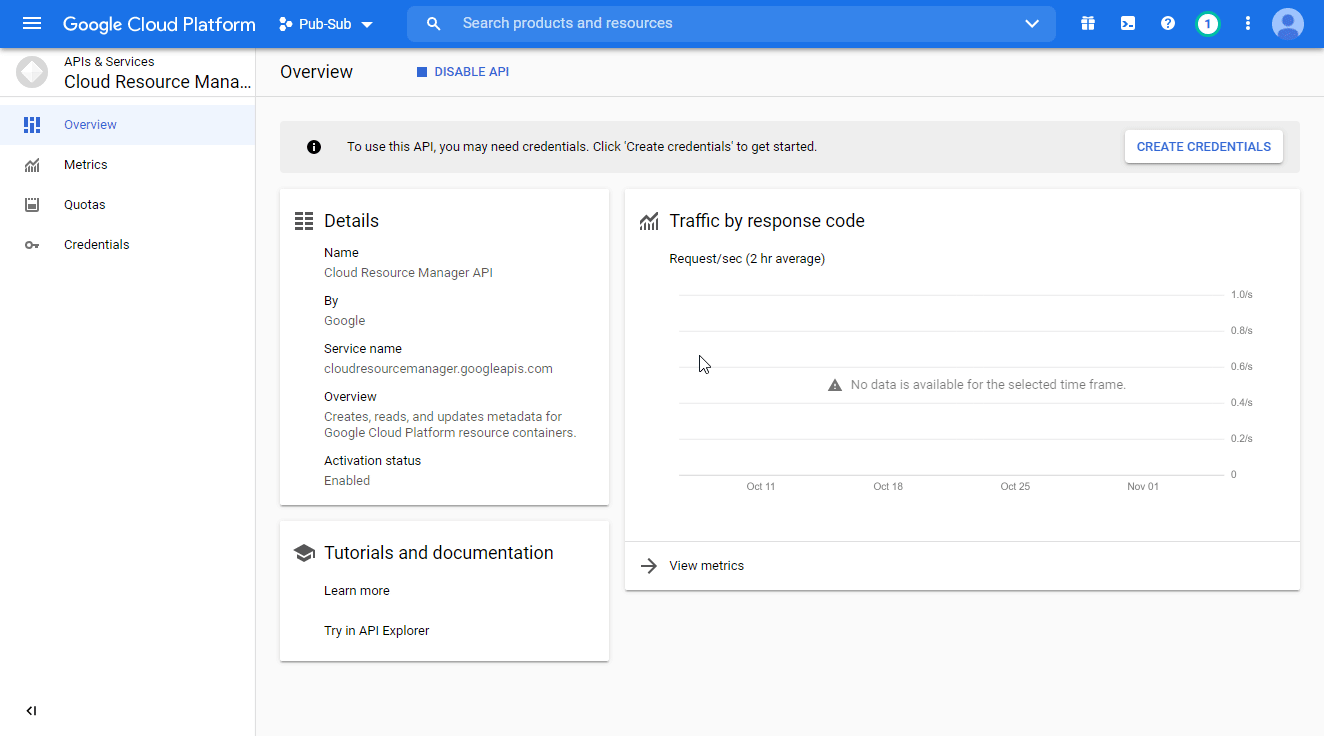
You will not be charged when selecting this option!
8. Fill in the required fields as follows:
For OAuth consent screen section:
|
Application name |
Enter the name of the app asking for consent. For example: Boost.space Integrator. |
|
UserCan use the system on a limited basis based on the rights assigned by the admin. Support Email |
Select your email. |
|
Authorized domains |
|
|
Developer contact information |
Enter your email. |
For the Scopes section:
Click the Add or Remove Scopes button to add the required scopes. Review the Google API Documentation for more information.
-
Required Scope:
https://www.googleapis.com/auth/cloud-platform
For the Test UsersCan use the system on a limited basis based on the rights assigned by the admin.section (if you are using a GSuite account under an organization):
The Optional Info section is displayed only for non-GSuite users and does not contain any required fields.
This step is required, otherwise you won’t be able to establish a connection with Boost.space Integrator.
Click the add users button to add the email address associated with the Google account you want to connect with Boost.space Integrator.
11. Navigate to Credentials. Click on the + create credentials, and select the OAuth Client ID option.
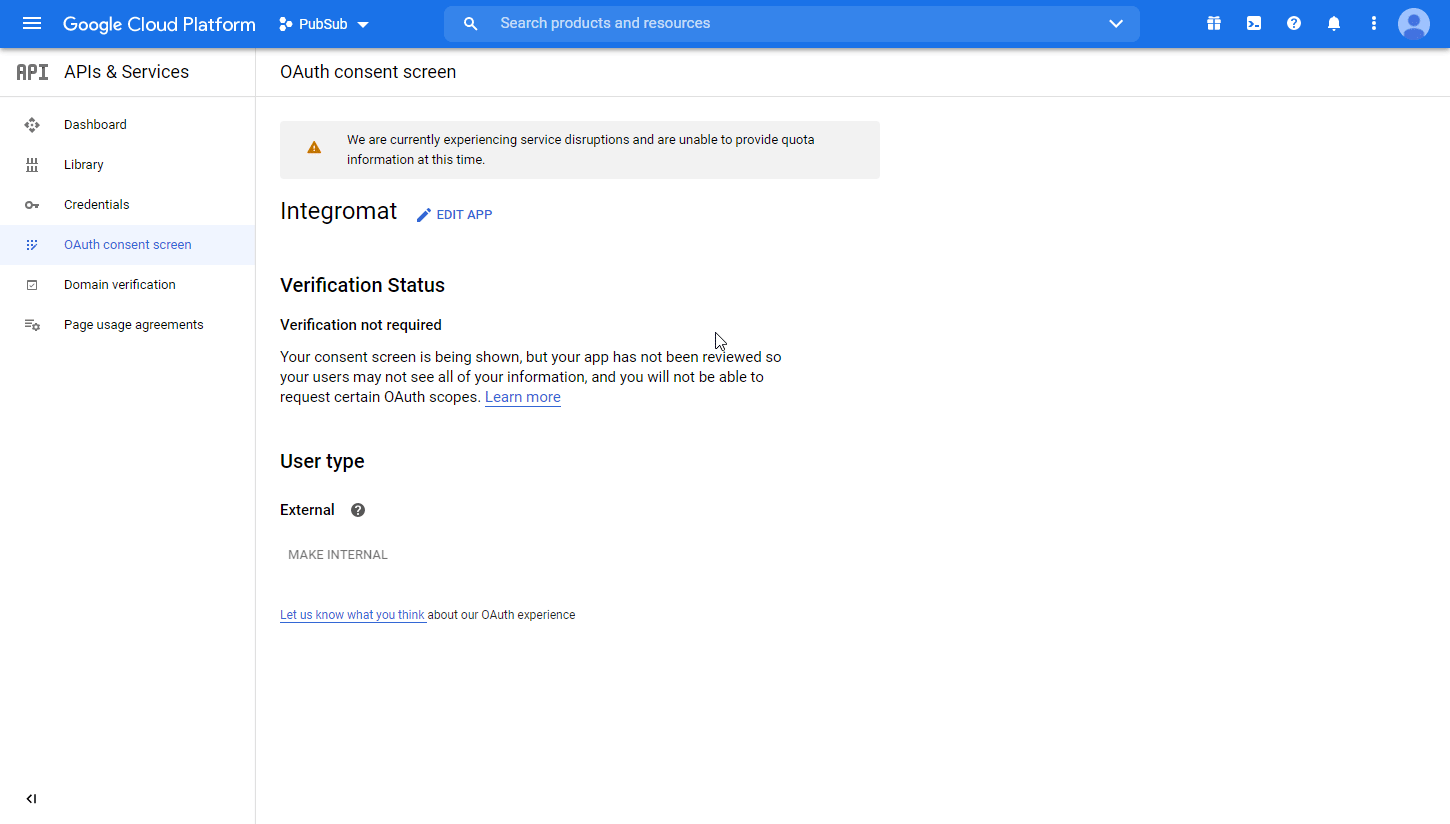
12. Fill in the required fields as follows, and then click the createbutton to create the application:
|
Application type |
|
|
Name |
e.g. |
|
Authorized redirect URIs |
|
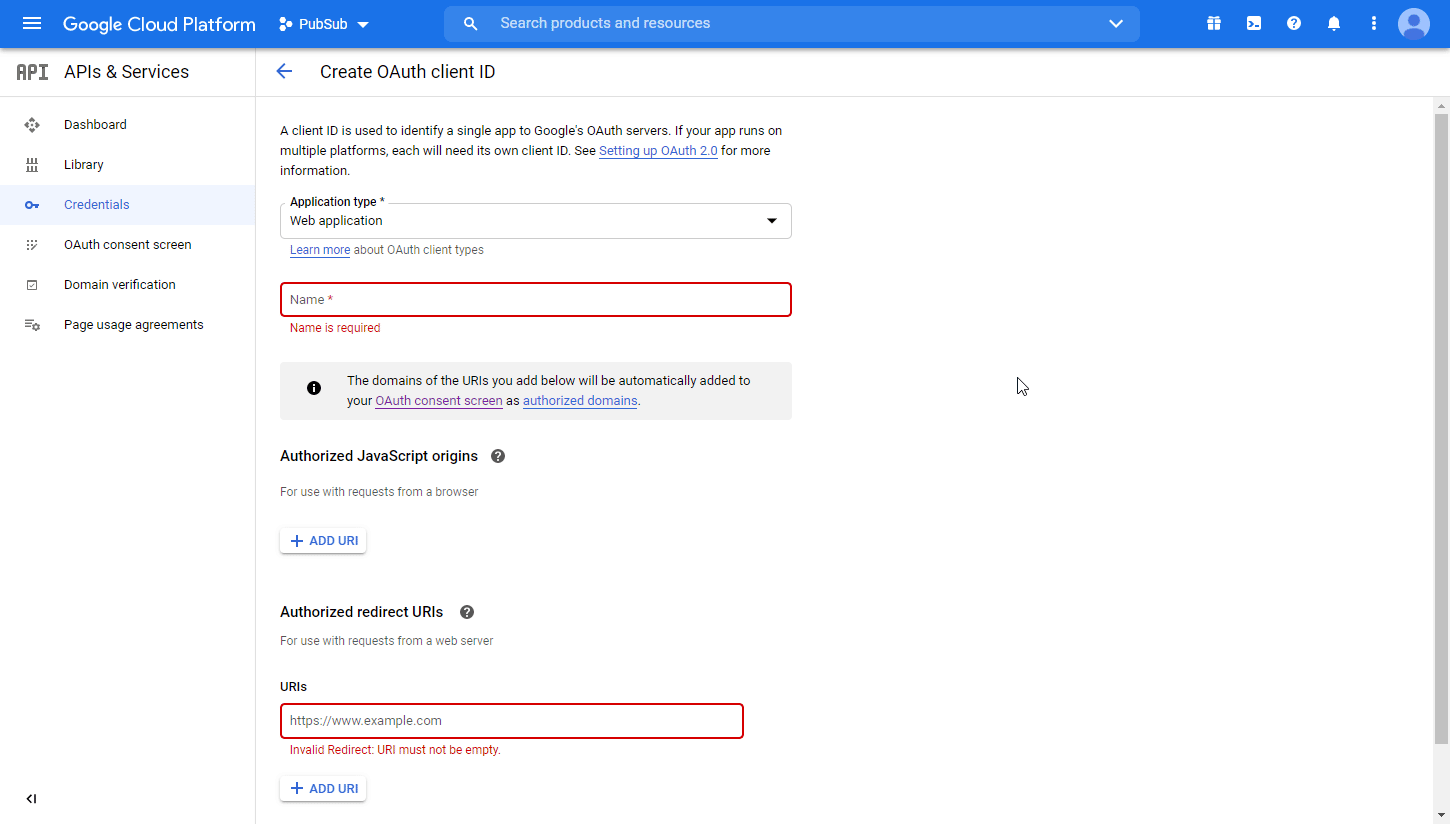
13. Copy your Client ID and Client Secret and store them in a safe place.
14. Log in to your Boost.space Integrator account, add a Google Cloud Text-to-Speech moduleThe module is an application or tool within the Boost.space system. The entire system is built on this concept of modularity. (module - Contacts) to your scenarioA specific connection between applications in which data can be transferred. Two types of scenarios: active/inactive., and click Create a connection.
15. Optional: In the Connection name field, enter a name for the connection.
16. In the Client ID and Client Secret fields, paste the credentials copied in Step 13.
15. Click the Sign in with Google button and select your Google account.
16. The This app isn’t verified window may appear. If so, continue to the next step. If not, go to Step 19.
The app = your OAuth client you have created above.
17. Click the Advanced link and then the Go to Make (unsafe) link to allow access using your custom OAuth client.
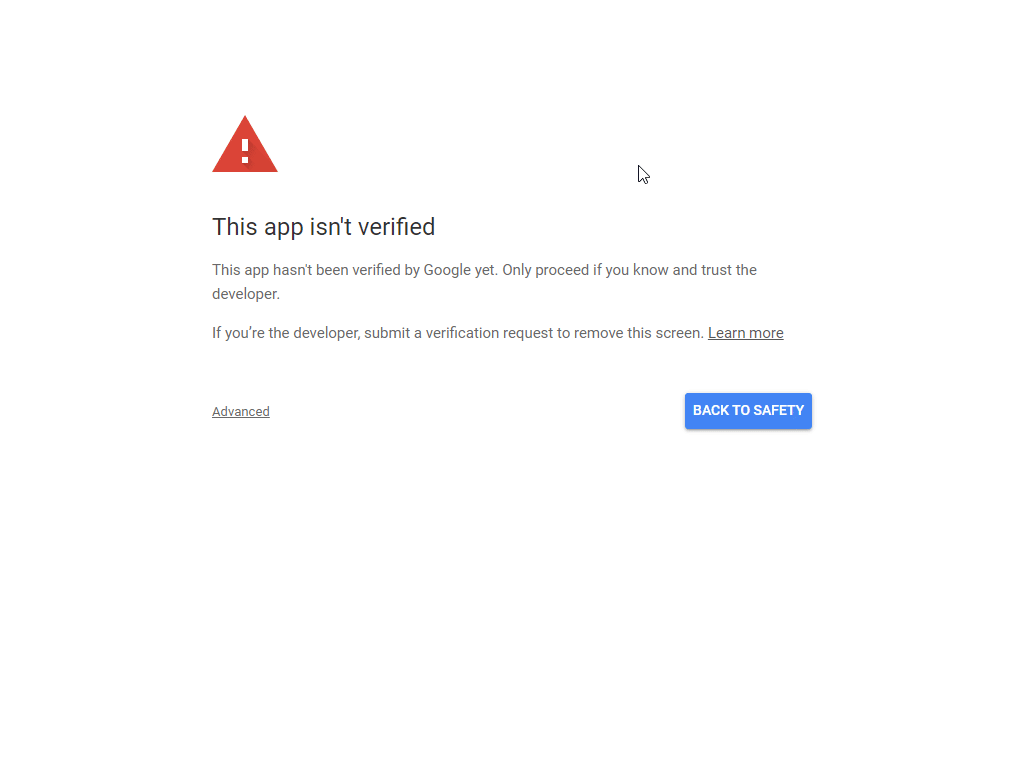
18. Click Allow twice to grant Boost.space Integrator permission.
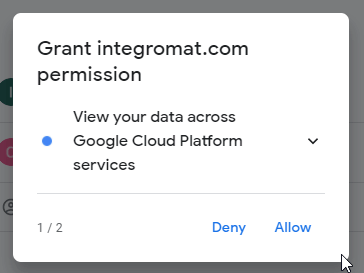
19. Review the access information and click Allow.
You have successfully established the connection. You can now edit your scenario and add more Google Cloud Text-to-Speech modules. If your connection requires reauthorization at any point, follow the connection renewal steps here.
To use Google Cloud Text-to-Speech modules, the billing must be enabled for your project. You can enable a free trial via Storage > Storage > Sign Up For a Free Trial.